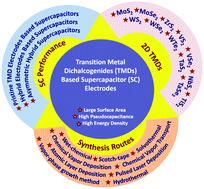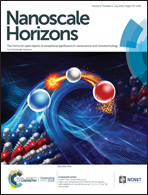Recent trends in transition metal dichalcogenide based supercapacitor electrodes
Abstract
The 21st century demands the rapid development of energy storage devices and systems that can cater to our daily energy needs of wearable devices in particular and electric vehicles in a large context. The advent of nanostructured materials has urged the scientific community and industry to take a renewed interest in developing electrochemical supercapacitors to nurture the energy needs of wearables and electric vehicles. Transition metal dichalcogenides (TMDs) are proposed to play a key role as active electrode materials in supercapacitors enabled by their large surface area and variable oxidation states. These properties enable them to store significant energy via electrical double layer and pseudocapacitive charge storage mechanisms. Herein, we discuss the recent advances in the development and the electrochemical performances of the TMD based supercapacitor electrodes. These electrodes range from those made in different nanoscale form factors to those exhibiting fascinating structural/electronic properties. The synergistic effects between TMDs and other materials in hybrid electrode designs and asymmetric configurations to meet the demand for high energy density requirements of modern electronic devices have been discussed in detail. Finally, the opportunities, as well as the challenges in TMD based supercapacitor research frontiers are highlighted.

- This article is part of the themed collection: Horizons Community Board Collection – Emerging 2D Materials for Energy and Electronics Applications


 Please wait while we load your content...
Please wait while we load your content...